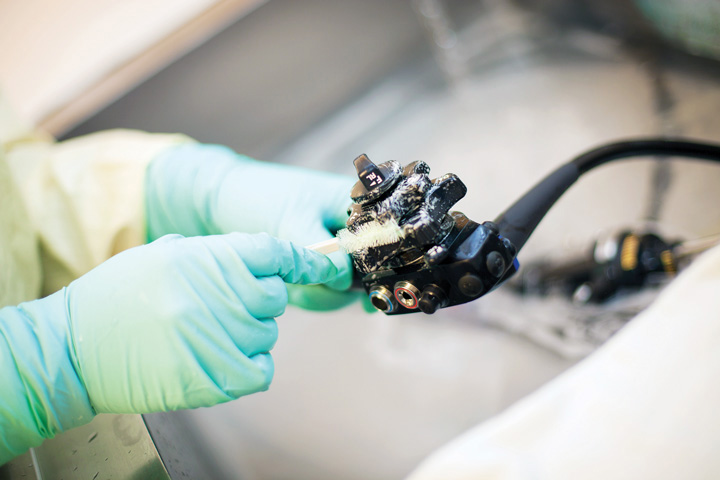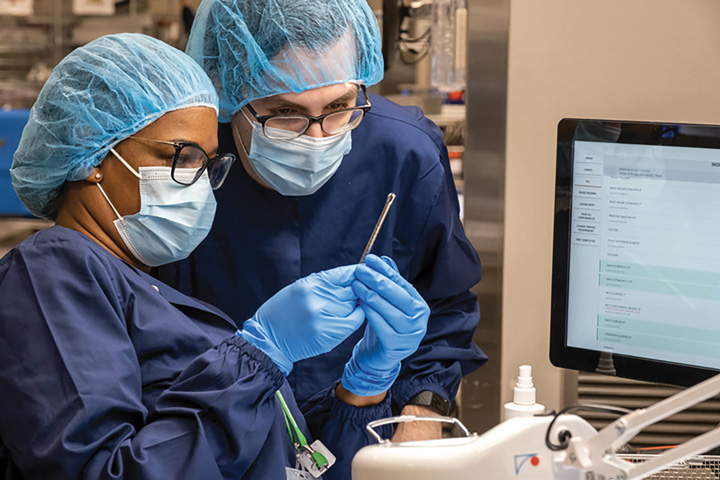When a health system switched from culturing to rapid cleaning verification (RCV) tests, both reprocessing errors and testing costs declined.
 QUICK CONFIRMATION A health system that switched from culturing reprocessed endoscopes to using rapid cleaning verification tests says the process is faster and less costly while enabling on-the-spot corrective education for techs who face massive manual cleaning workloads.
QUICK CONFIRMATION A health system that switched from culturing reprocessed endoscopes to using rapid cleaning verification tests says the process is faster and less costly while enabling on-the-spot corrective education for techs who face massive manual cleaning workloads.
A decade after the CDC, FDA and others first stressed that more attention should be paid to the dangers of improperly reprocessed endoscopes, such errors remain frequently cited by The Joint Commission.
Marc Coulombe, RN, BSN, CIC, an infection preventionist with WakeMed Health & Hospitals in Raleigh, N.C., described how his organization has been working to avoid those errors for quite some time during a presentation at the Association for Professionals in Infection Control and Epidemiology’s 2023 Annual Conference & Exhibition in June. He also revealed a recent tactical change that improved the system’s results.
Prior to August 2022, infection preventionists monitored the situation at one of WakeMed’s three endoscopy departments by culturing four patient-ready scopes there once a month. Each culture cost $27 for supplies and required two infection preventionists to perform. Between 2016 to 2021, the positive culture rate was consistent at 12.9%, according to Mr. Coulombe.
In August 2022, however, WakeMed eschewed scope culturing in favor of rapid cleaning verification (RCV), a 90-second process that uses test strips to identify residual contaminants without the need for lab testing. “If there is a failure, staff are immediately re-educated, the scope recleaned and RCV repeated,” reports Mr. Coulombe. Because RCV tests are quicker and not as expensive as culturing — supplies cost only $2.50 per scope and the test requires only one infection preventionist to complete rather than two — it is now employed on a monthly basis at all three of WakMed’s endoscopy units.
When WakeMed first rolled out the new testing regimen, 14 scopes were tested. Four failed initial cleaning tests and three passed a second test after staff re-education. The fourth scope failed twice more and was removed from service. A month later, in September 2022, 15 scopes were tested. Three failed their initial cleaning test, but all passed retesting after staff re-education. The following month, only one scope failed initial testing and passed retesting following staff re-education.
Mr. Coulombe concludes, “Compared to culturing, RCV validation combined with ‘just in time’ staff education results in fewer improperly reprocessed scopes, reducing the risk of patient pathogen exposure. Staff skill and engagement is increased because they receive immediate feedback. Expense and labor burden is decreased due to lower supply costs and the use of only one infection preventionist, resulting in more monthly scope tests.”
.svg?sfvrsn=be606e78_3)


.svg?sfvrsn=56b2f850_5)